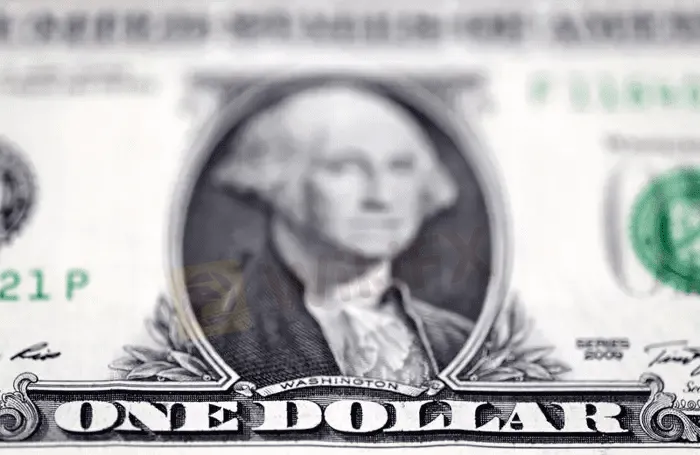简体中文
繁體中文
English
Pусский
日本語
ภาษาไทย
Tiếng Việt
Bahasa Indonesia
Español
हिन्दी
Filippiiniläinen
Français
Deutsch
Português
Türkçe
한국어
العربية
Dollar struggles to regain inflation-induced losses
Abstract: The euro and Japanese yen were sitting pretty on Thursday morning after U.S. inflation data overnight came in less hot than feared and sent the dollar tumbling.

The European common currency was trading at $1.0285, with its 0.14% loss on the day, though it came after a 0.84% jump on Wednesday – its biggest daily percentage gain since mid-June.
Similarly one dollar was worth 133.15 yen up 0.2% on Thursday, after a 1.6% tumble the previous day .
The dollar plunged overnight after U.S. consumer prices were unchanged in July compared with June, when prices rose a monthly 1.3%. The July result was lower than expectations due to a sharp drop in the cost of petrol, causing markets to reposition on hopes that inflation was peaking.
If price rises have reached their zenith, investors expect the U.S. Federal Reserve will not have to maintain its eye-wateringly steep pace of interest rate hikes, which had been supporting the dollar.
Analysts at Standard Chartered said the decline in the dollar seemed to be driven by improvements in investors attitude to riskier assets – except for the move against the yen, which they said was more of a yield play.
“The surprise downward (inflation) move takes out much of the fear that the market had of a 75bps Fed hike or even inter-meeting moves,” they wrote in a note.
“We suspect that many investors did not want to put on positions ahead of an important number that could have gone either way, so some of the post-CPI moves probably reflect delayed buying of risk-correlated positions.”
U.S. shares and short dated treasuries also rallied on the news, which pushed the Nasdaq more than 20% above its June low and the two-year treasury yield down to 3.2141%, seven basis points lower than its previous close. [MKTS/GLOB]
U.S. Treasuries were not trading in Asia due to a holiday in Japan.
Markets are currently pricing in a 57.5% chance of a 50 basis point interest rate rise at the Fed‘s next meeting, according to the CME’s Fedwatch tool, though another 75 basis point increase remains possible.
Fed policy makers were also warning in public remarks after the data that they would continue to tighten monetary policy until price pressures were fully broken.
The Australian dollar, another commonly used proxy for risk sentiment, was at $0.7066, down 0.2% after a 1.7% overnight gain, and sterling, was slightly softer at $1.2192.
Bitcoin, which has also traded in line with risk assets, was up 2.6% at $24,577. A break past $24,676 would be a two month high for the worlds largest cryptocurency.
========================================================
Currency bid prices at 0523 GMT
Description RIC Last U.S. Close Pct Change YTD Pct High Bid Low Bid
Previous Change
Session
Euro/Dollar $1.0277 $1.0299 -0.21% -9.60% +1.0303 +1.0277
Dollar/Yen 133.1550 132.8900 +0.22% +15.79% +133.3000 +132.7500
Euro/Yen 136.85 136.88 -0.02% +5.01% +137.0800 +136.6000
Dollar/Swiss 0.9444 0.9430 +0.16% +3.55% +0.9445 +0.9424
Sterling/Dollar 1.2185 1.2217 -0.20% -9.85% +1.2220 +1.2185
Dollar/Canadian 1.2788 1.2778 +0.09% +1.15% +1.2792 +1.2774
Aussie/Dollar 0.7068 0.7082 -0.21% -2.79% +0.7088 +0.7063
NZ 0.6390 0.6404 -0.23% -6.65% +0.6412 +0.6385
Dollar/Dollar
All spots
Tokyo spots
Europe spots
Volatilities
Tokyo Forex market info from BOJ

Disclaimer:
The views in this article only represent the author's personal views, and do not constitute investment advice on this platform. This platform does not guarantee the accuracy, completeness and timeliness of the information in the article, and will not be liable for any loss caused by the use of or reliance on the information in the article.
Read more

Russia to Fully Ban Crypto Mining in 10 Regions Starting January 1, 2025
Starting from January 1, 2025, Russia will implement a comprehensive ban on cryptocurrency mining in 10 regions for a period of six years. The ban will remain in effect until March 15, 2031.

Why is there so much exposure against PrimeX Capital?
In recent months, PrimeX Capital, a Forex and CFD broker established in 2022, has become a subject of concern in the trading community. However, despite these enticing features, the broker's reputation has been severely tarnished by multiple complaints and a troubling lack of regulatory oversight.

The Hidden Checklist: Five Unconventional Steps to Vet Your Broker
Forex broker scams continue to evolve, employing new tactics to appear credible and mislead unsuspecting traders. Identifying these fraudulent schemes requires vigilance and strategies beyond the usual advice. Here are five effective methods to help traders assess the legitimacy of a forex broker and avoid potential pitfalls.

Doo Financial Obtains Licenses in BVI and Cayman Islands
Doo Financial, a subsidiary of Singapore-based Doo Group, has expanded its regulatory footprint by securing new offshore licenses from the British Virgin Islands Financial Services Commission (BVI FSC) and the Cayman Islands Monetary Authority (CIMA).
WikiFX Broker
Latest News
AIMS Broker Review
The Hidden Checklist: Five Unconventional Steps to Vet Your Broker
YAMARKETS' Jingle Bells Christmas Offer!
Why is there so much exposure against PrimeX Capital?
Russia to Fully Ban Crypto Mining in 10 Regions Starting January 1, 2025
MTrading’s 2025 "Welcome Bonus" is Here
Doo Financial Obtains Licenses in BVI and Cayman Islands
CFI’s New Initiative Aims to Promote Transparency in Trading
Currency Calculator



